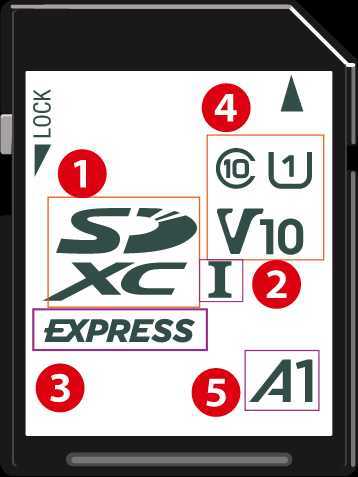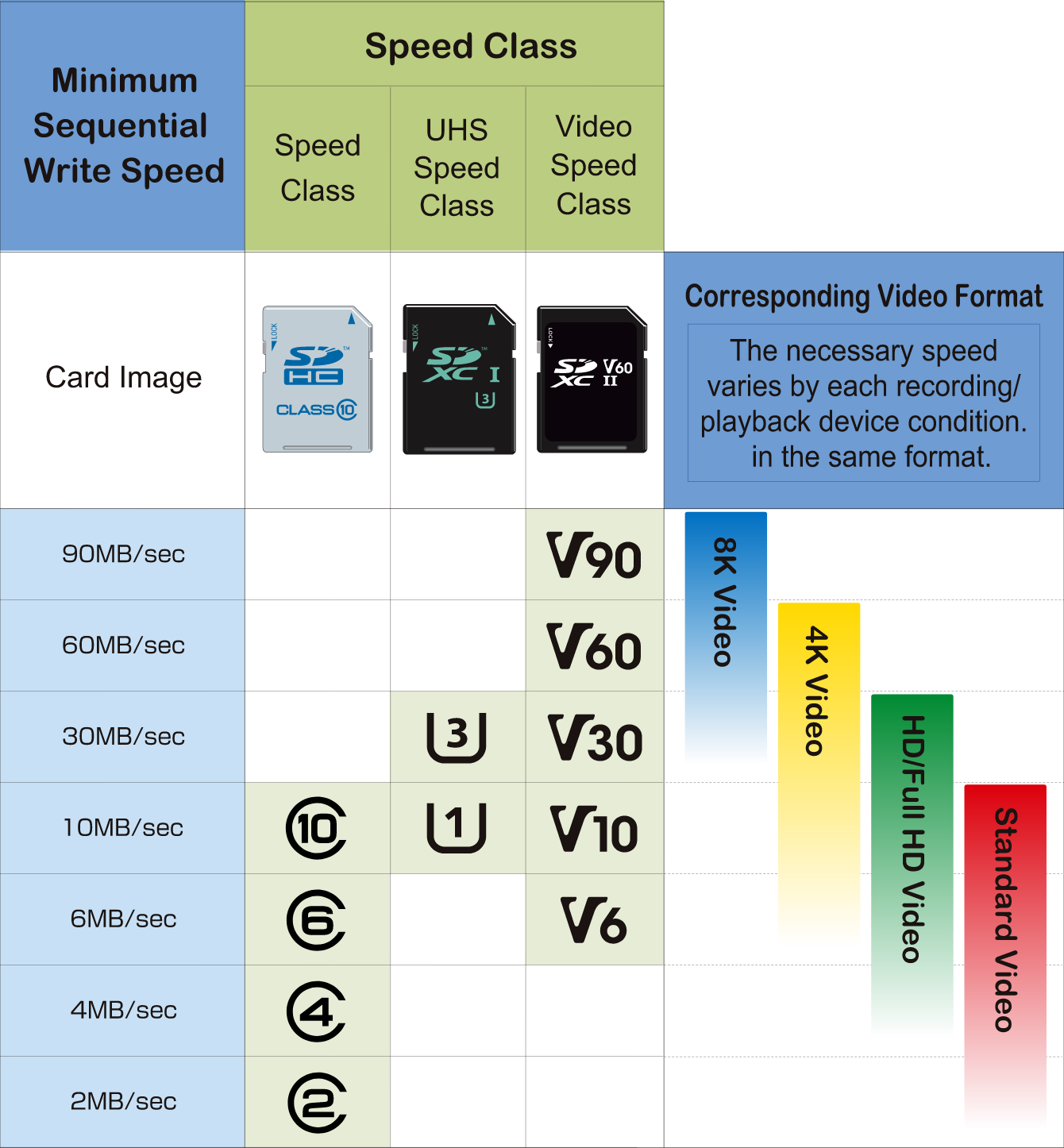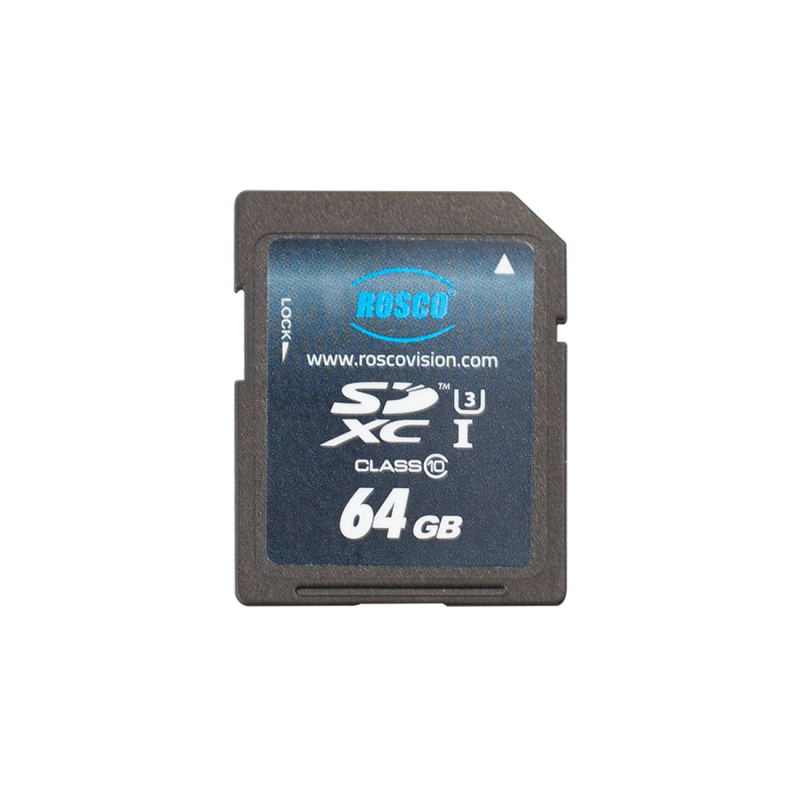Table of Contents
Understanding Your SD Cards
author: Cody H.
In today's world, SD cards can be found anywhere - from your cellphone, inside your car, digital cameras, drones, and even doorbells. Even though these little pieces of plastic and silicon that we trust to contain pieces of our lives are found everywhere, not all of them are made equally.
This article will teach you on how to properly select the right SD card for your Rosco camera to ensure you always capture the video you need.
Under The Silicon
An SD card uses what is known as solid-state storage meaning that, unlike hard-disk drives (HDD) that have a read-write head used to write information to a spinning disk, an SD card instead uses integrated circuits and flash memory to store data instead. This means that SD cards are more resistant to shock, can come in smaller form factors and can operate faster. Even though SD cards have these many advantages, they are still susceptible to wear and eventually will need to be replaced.
Life Expectancy
There are many factors that can contribute to an SD card's life expectancy, but a main factor is the cell endurance or how many read/write cycles an SD card can endure before it can no longer reliably retain data. Another main factor that contributes to SD card wear is temperature.
The two types of temperature points to consider with an SD card is operating temperature and non-operating (storage) temperature. Out of those two points, non-operating temperature has the greatest impact on SD card performance. The lower the non-operating temperature, the better the life expectancy will be while higher temperatures will lower life expectancy of the card.
So when sourcing an SD card for your needs, it is important to understand what type of application you are needing an SD card for and what kind of environment it will spend the majority of the time in.
Decoding SD Card Symbols

You may have noticed on the front of every SD card are certain numbers and symbols that appear on some cards and different symbols on other SD cards. These tell you about the SD card in terms of performance, form factor, file system, card speed, and bus interface. These are important to know if you are sourcing an SD card to understand what that SD card is capable of.
Capacity & Form Factor
Form factor refers to the physical size and shape of the card. There are several form factors of SD card available but for the purposes of this article, we will focus on the standard size SD.
The following are the different capacities available:
- Secure Digital (SD) - Up to 2GB
- Secure Digital High Capacity (SDHC) - More than 2GB and up to 32GB
- Secure Digital Extended Capacity (SDXC) - More than 32GB and up to 2TB
- Secure Digital Ultra Capacity (SDUC) - More than 2TB and up to 128TB
Bus Interface
The Bus Interface of an SD card refers to the type of host device it is most compatible with. This is important to know because for the best performance (meaning speed) an SD card's bus interface must match the device it is being used in. You can use a SD card rated for one type of bus interface in a device with another, however, this will cause a reduction in speed which will degrade the performance of the card.
The following are the symbols associated with the different bus interfaces available.
Note: The manufacturer will sometimes drop the UHS from the label and just use the roman numeral to indicate the bus interface of a card (refer to pic above for example of this).
- UHS-I - 104 MB/sec
- UHS-II - 312 MB/sec
- UHS-III - 324 MB/sec
- UHS Express - 985 MB/sec
Speed Class
This may seem confusing with all of the symbols related to the speed class, but it is actually simple to understand; the speed class of an SD card is the minimum continuous write speed of the card, in other words it is the base writing speed the card can be counted on having during use. Due to the changing standards for representing card speed, this has led to the card manufacturers redundantly labeling speed classes on their cards.
Speed is important to know because you want to make sure the card you are getting can support the write speeds necessary for the application. For example if you are capturing 4K video, you want to make sure you get a card with a speed of at least Class 10/ U1 / V10.

App Performance Class
Since this is not relevant to our purposes here I won't delve into this, but this is essentially the cards ability to run and execute smartphone applications.
What Rosco Recommends
For the best performance of any Rosco camera, we recommend using our Rosco branded SD cards.

The Rosco SD card is an industrial grade card selected for optimal performance in the Dual-Vision XC4 camera. What does “industrial grade” mean exactly? This means that this card will out perform and out live any consumer or commercial SD card available. After thousands of hours of read/write testing and putting this card through the worst conditions we could, it still came out on top of other branded cards. This translates to having a longer lasting card and video being captured reliably when you need it the most.
Contact your Rosco Sales representative for more information on how to obtain the Rosco SD card.
I Want To Purchase My Own Cards
Even though it is not recommended, we understand and respect the need for freedom of choice so we also support the use of off-the-shelf SD cards if so desired. Not only are the majority of off-the-shelf cards not rated for the types of environment the cameras operate in, but are also more susceptible to read/write errors when the card begins to degrade. We also cannot tell you the percentage of life left on off-the-shelf cards so there will be more work on your end to keep track of card usage.
If you still want to use an off-the-shelf card then here are some guidelines to get you started:
- At a minimum, use an SDXC capacity card (up to 512 GB).
- Use a card that is rated for temperatures between -20 C (-4 F) to 85 C (185 F).
- Bus interface UHS-I
- Speed class 10 (U3)
- Format the SD card in DV-Pro5
Other Things To Consider
How many cameras you have recording & the quality they are set at - The more cameras you have recording, the bigger each video file size will be meaning video will be available for shorter amounts of time given the amount of storage you have. The same can be applied to camera settings: the higher the settings the larger the video files will be. Ensure you get a capacity that can meet your needs for video availability.
Environment in your vehicles - The environment the SD card operates in can severely impact its performance. If your vehicles are located in an area that gets extremely hot, expect the SD card's life to be degraded faster.
Source
1. Understanding Life Expectancy of Flash Storage. NI. (n.d.). https://www.ni.com/en-us/support/documentation/supplemental/12/understanding-life-expectancy-of-flash-storage.html.
2. Consumers: SD Association. SD Association | The SD Association. (2021, March 17). https://www.sdcard.org/consumers/.